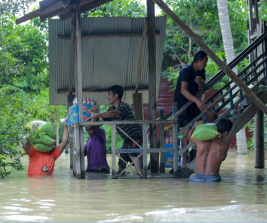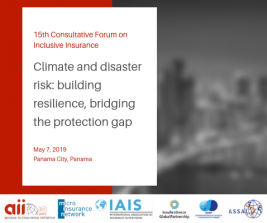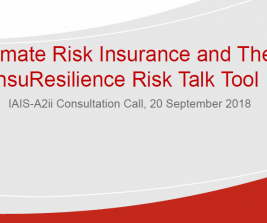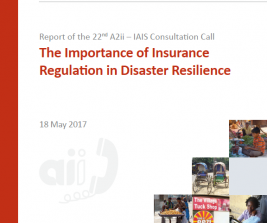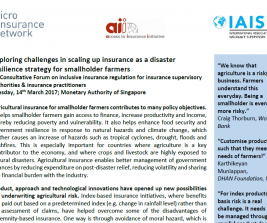Insurance supervisors have both good reason and the means to take active steps to promote resilience against climate risks and natural disasters, particularly amongst the low-income and underserved population. This is from the perspectives of carrying their mandates as local regulators, as well as stakeholders in achieving international goals relating to DRR, CCA and the SDGs. The topic of supervisory roles in this regard is not yet explored at depth. Therefore, this paper aims to contribute to the discourse by sharing ideas and stimulating discussions as to what the roles of supervisors can be.
In this paper, the term “climate risk” will encompass natural disasters that affect vulnerable households, entrepreneurs, smallholder farmers, whether amplified or not by climate change.
This concept is closer to the term “physical climate risk” which is a component of the more
comprehensive concept of climate risk introduced by Mark Carney, Governor of the Bank of England, where climate risk is composed of physical risks, liability risks and transition risks.
Considering the above, climate risk insurance (CRI) in this paper is defined as any risk transfer
solution at the macro, meso and micro-level that aims to provide coverage against climate
risks.

